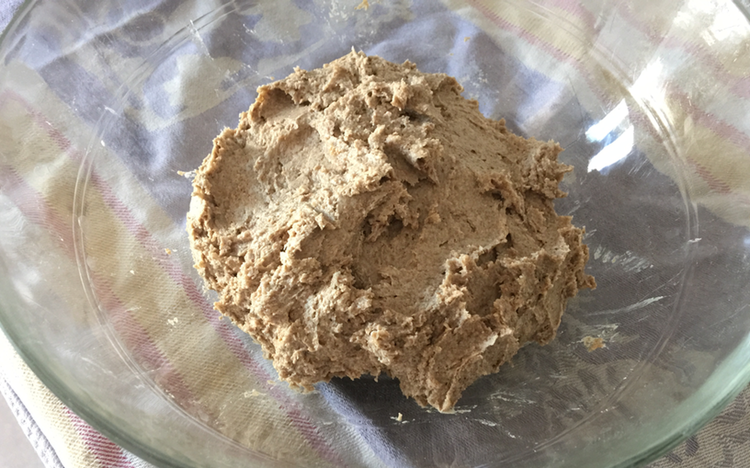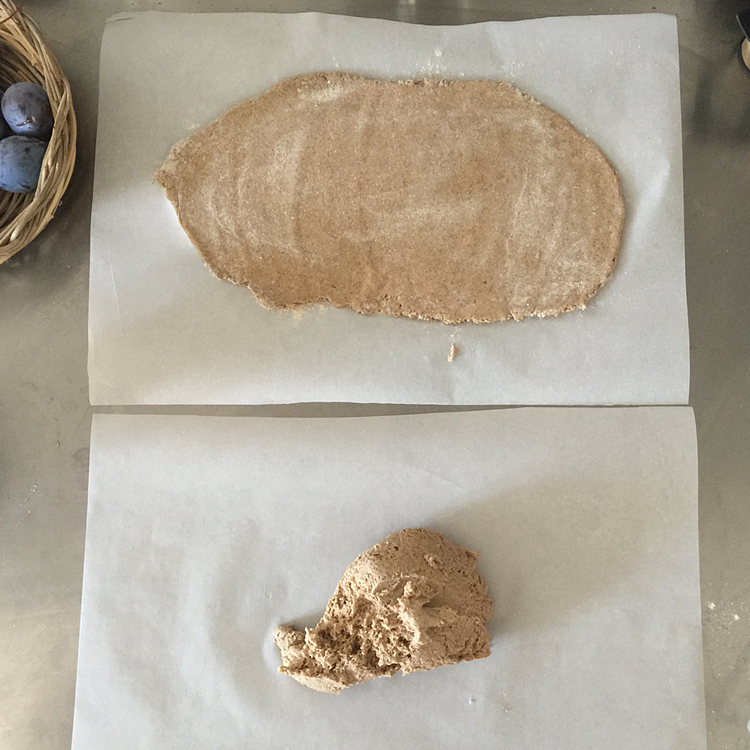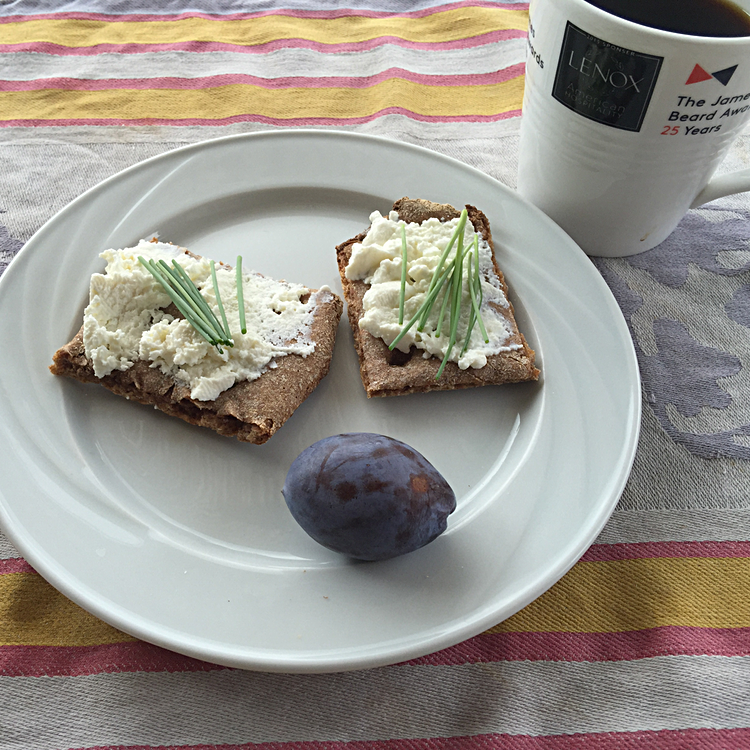I bake often enough that a 1kg bag of flour creates too many trips to the supermarket. Oddly, though, it is very hard to find anything larger in the shops here. Even the hippy-dippy coop’s 5kg bags are not straight flour but things like pizza mix with built-in yeast. So I buy flour online in bulk, usually 20kg at a time; 10 strong, 5 weaker and 5 wholemeal. And although things tend to balance out, sometimes I’m stuck with a surfeit of one or the other. At the moment, it’s the weaker white flour, so I was looking through some recipes in search of inspiration. I decided to try linseed bread from Dan Lepard’s The Handmade Loaf.
Last night – without knowing precisely what I planned to bake – I built my 100% starter, so this morning I had 160gm of nice, ripe, bubbly leaven to begin with. I did the conversions from Dan Lepard’s yeasted recipe, measured the stuff, and started to mix. But while Dan forecasts a “soft and sticky dough,” and suggests you “scrape any dough from your fingers back into the bowl,” I ended up with a very dry dough indeed. It held together, but only barely.
I tried to get a bit more water into the dough, but that is really difficult with a stiff dough. Pretty sure that I had done the conversion right, I weighed the dough. And lo! It weighed 600gm instead of the 500gm that totting up Dan’s ingredients indicated. But how? I thought back, and still can’t work it out. I couldn’t possibly have put 100 gm too much flour in. Could I? And 200 gm of linseeds instead of 100? Maybe.
Off I went for my morning constitutional, during which I decided to turn this disaster into another experiment in my cracker series. So after about three hours of rising, I rolled the dough out as thin as I could get it, using a bit of rice flour – aka baker’s Teflon – to keep things from sticking. It was down to maybe 2–3 mm, which I cut into neat shapes. Now, the tricky bit; how long, and how hot?
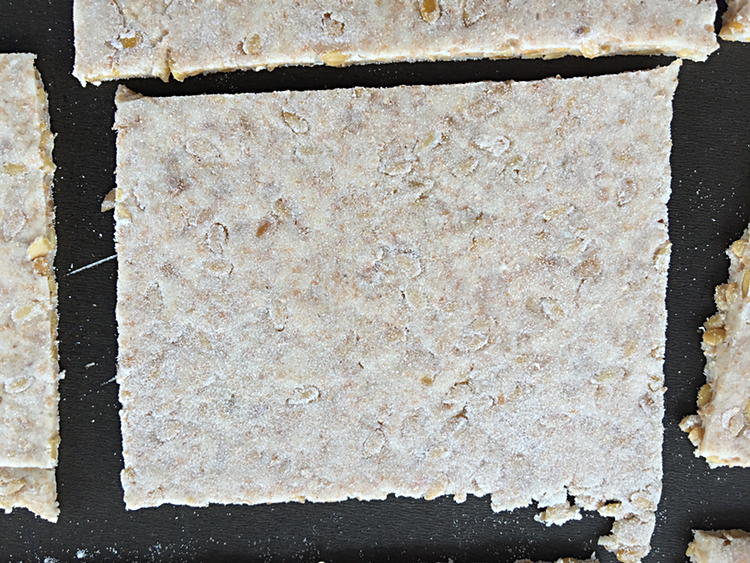
I put the oven on max, which is just north of 220°C, and rolled out the scraps that resulted from tidying up the edges of the crackers. That gave me four test crackers. They got 10 minutes before I took a look. They were still quite pale, and soft. I flipped them over, and gave them another 10 minutes. Maybe a little too well done. So for the first tray of crackers proper, which were definitely a bit thinner than the tests, I reduced the time to 8 minutes per side. Not bad at all. And the second batch got even less, 7 minutes a side.
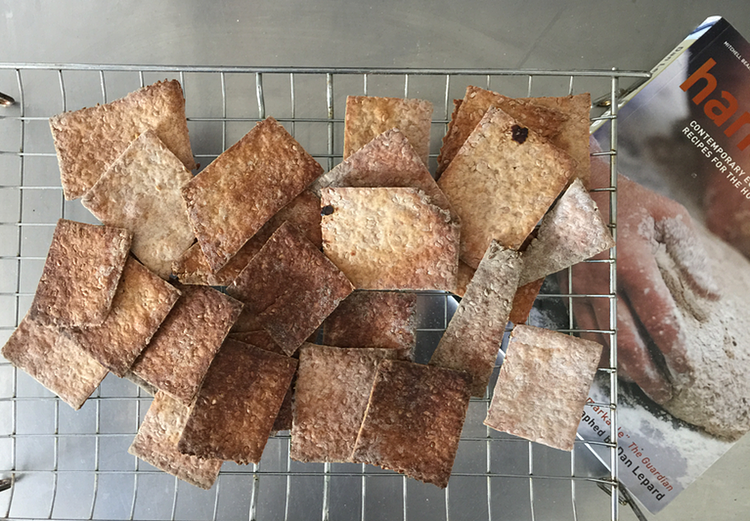
Done
They were so good. Crunchy, but not tooth-breakingly so, with the nuttiness of the flax seeds and just a hint of bitterness. Magic, really.
Now all I have to work out is where I went wrong in the first place, so I can do it again.
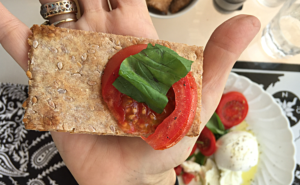

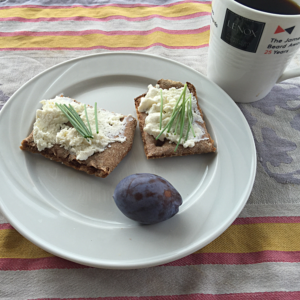 It’s been 2 1/2 years since I last tried, and that was a qualified success. So I decided to use the
It’s been 2 1/2 years since I last tried, and that was a qualified success. So I decided to use the 